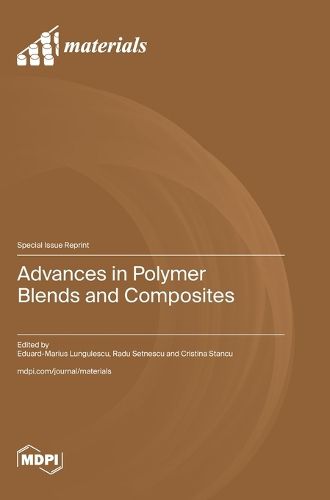Readings Newsletter
Become a Readings Member to make your shopping experience even easier.
Sign in or sign up for free!
You’re not far away from qualifying for FREE standard shipping within Australia
You’ve qualified for FREE standard shipping within Australia
The cart is loading…






This title is printed to order. This book may have been self-published. If so, we cannot guarantee the quality of the content. In the main most books will have gone through the editing process however some may not. We therefore suggest that you be aware of this before ordering this book. If in doubt check either the author or publisher’s details as we are unable to accept any returns unless they are faulty. Please contact us if you have any questions.
Polymer blends and composites are seen as valuable technical solutions to improve the mechanical and other properties of polymers. Hence, nowadays, these materials are used in a wide range of applications. The actual trends in research and development of these materials arise from two main requirements, which often need to be conciliated: i) increasing performance of polymer materials and extending their applications as advanced materials in various fields; ii) better fitting of new materials to sustainable development requirements that involve the improvement of the environmental behavior of polymer materials. This diminishes or completely replaces the use of oil-based polymers and moves us toward renewable resources, improving their environmental acceptance, use of less aggressive additives for the environment, etc., in conditions of bringing the technical performance and cost effectiveness at similar levels to "traditional", oil-based, polymers. Polymer blends and composites would be valuable simultaneous solutions for both above-mentioned requirements. In this sense, the present Special Issue reprint aims to give a picture of the latest problems and proposed solutions in formulation, processing, characterization and testing of these materials, as well as in their innovative applications in engineering and biomedical fields.
$9.00 standard shipping within Australia
FREE standard shipping within Australia for orders over $100.00
Express & International shipping calculated at checkout
This title is printed to order. This book may have been self-published. If so, we cannot guarantee the quality of the content. In the main most books will have gone through the editing process however some may not. We therefore suggest that you be aware of this before ordering this book. If in doubt check either the author or publisher’s details as we are unable to accept any returns unless they are faulty. Please contact us if you have any questions.
Polymer blends and composites are seen as valuable technical solutions to improve the mechanical and other properties of polymers. Hence, nowadays, these materials are used in a wide range of applications. The actual trends in research and development of these materials arise from two main requirements, which often need to be conciliated: i) increasing performance of polymer materials and extending their applications as advanced materials in various fields; ii) better fitting of new materials to sustainable development requirements that involve the improvement of the environmental behavior of polymer materials. This diminishes or completely replaces the use of oil-based polymers and moves us toward renewable resources, improving their environmental acceptance, use of less aggressive additives for the environment, etc., in conditions of bringing the technical performance and cost effectiveness at similar levels to "traditional", oil-based, polymers. Polymer blends and composites would be valuable simultaneous solutions for both above-mentioned requirements. In this sense, the present Special Issue reprint aims to give a picture of the latest problems and proposed solutions in formulation, processing, characterization and testing of these materials, as well as in their innovative applications in engineering and biomedical fields.